How AI Deepfakes Complicate Cryptid Video Analysis
AI deepfakes make cryptid video analysis much more difficult because they produce highly realistic fake footage that looks authentic. Advances in technology, like GANs, allow creators to seamlessly manipulate videos, fooling both the public and experts. This increases skepticism and makes trusting genuine evidence harder. With detection tools often struggling to catch subtle signs of tampering, itâs important to stay informedâif you want to understand how to navigate this evolving challenge, keep exploring.
Key TakeawaysAdvanced AI deepfakes mimic cryptid features, making it harder to distinguish authentic footage from manipulated content.Seamless manipulation reduces visible artifacts, challenging forensic tools to detect signs of editing.Deepfakes erode trust in genuine cryptid videos, increasing skepticism and complicating verification efforts.Evolving AI techniques continuously improve realism, outpacing current detection methods and increasing false-positive risks.The proliferation of convincing fakes hampers research credibility and fuels misinformation within cryptid communities.The Rise of AI-Generated Media in Cryptid Research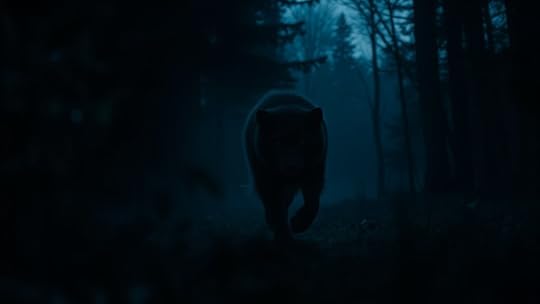
Artificial intelligence has revolutionized cryptid research by making it easier to generate and manipulate media content. This rise of AI-generated media introduces significant ethical implications, especially around authenticity and trustworthiness. As you analyze videos or images claiming to show cryptids, you must consider how deepfakes could deceive viewers or spread false information. Legal considerations also come into play, such as copyright issues and potential misuse of AI tools to create fraudulent content. These developments challenge the integrity of cryptid research, forcing you to critically evaluate sources and verify data carefully. While AI offers powerful tools to explore cryptids more vividly, it also demands a cautious approach to prevent misinformation and respect legal boundaries.
Techniques Behind Deepfake Creation and Their Evolution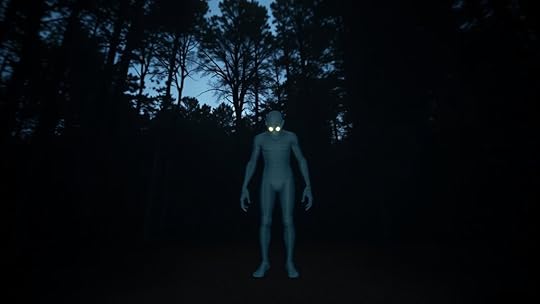
The techniques behind deepfake creation have rapidly evolved, enabling even amateurs to produce highly convincing manipulated media. Central to this progress are neural networks, specifically generative adversarial networks (GANs), which simulate realistic images and videos. GANs consist of two neural networks: a generator that creates fake media and a discriminator that detects fakes, competing against each other to improve quality. Over time, this adversarial process sharpens the realism of deepfakes, making them harder to distinguish from authentic footage. Advancements in algorithms, increased computational power, and larger datasets have accelerated this evolution, allowing for more sophisticated manipulations. As a result, deepfakes now encompass seamless facial swaps, voice synthesis, and contextual alterations, markedly complicating efforts to verify the authenticity of cryptid videos.
Challenges in Authenticating Cryptid Footage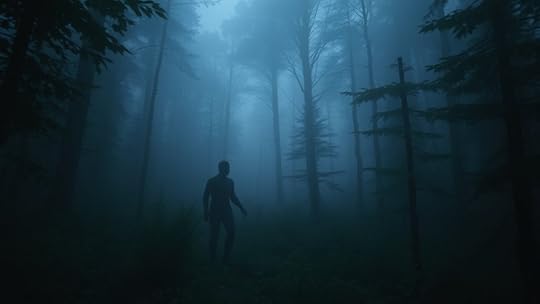
Authenticating cryptid footage is becoming more complex as deepfake technology advances. You might struggle to distinguish real recordings from convincingly manipulated ones, raising questions about their trustworthiness. This challenge makes verifying cryptid sightings increasingly difficult for researchers and enthusiasts alike.
Deepfake Detection DifficultiesDetecting deepfakes in cryptid footage presents significant challenges because advanced manipulation techniques can closely mimic genuine video features. These sophisticated edits make it difficult to distinguish authentic visuals from fabricated ones, especially when visual authenticity is compromised. Digital forensics tools often struggle to identify subtle inconsistencies, such as unnatural shadows, inconsistent lighting, or irregular movements. You need to be aware that:
Deepfakes can replicate facial expressions and body language convincinglyCompression artifacts may hide manipulation tracesAI-generated videos can pass basic authenticity checksSubtle digital artifacts require expert analysis to detectThis complexity hampers reliable verification, making it harder to authenticate cryptid footage confidently. As manipulation methods evolve, digital forensics must adapt, but the sophistication of deepfakes continues to challenge detection efforts.
Trustworthiness of FootageGiven the increasing sophistication of deepfake technology, verifying the authenticity of cryptid footage has become a major challenge. Authenticity concerns cast doubt on whether footage is genuine or manipulated, making it difficult to establish credibility. This leads to credibility challenges, as even seemingly convincing videos can be fabricated. To navigate this, consider the following:
Authenticity ConcernsCredibility ChallengesDeepfakes mimic real footageHoaxes can appear convincingDifficult to detect fakesPublic trust erodes over timeLimited forensic toolsAuthenticity verification becomes harderThese issues force you to question every piece of footage, emphasizing the importance of advanced verification methods to combat false narratives. Without reliable tools, the trustworthiness of cryptid footage remains uncertain.
How Deepfakes Impact Public Perception and Skepticism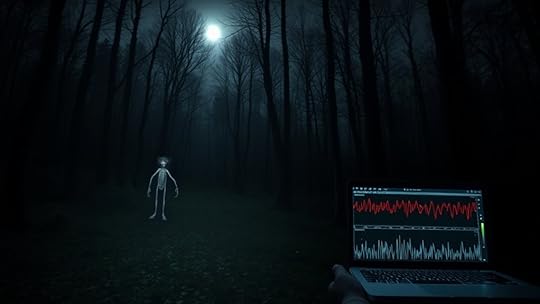
Deepfakes make it harder for you to trust what you see online, increasing your doubts about genuine footage. As false videos become more convincing, skepticism levels rise, making it tough to distinguish truth from fiction. This shift fuels misinformation, challenging your ability to navigate credible information effectively.
Increased Public DistrustHow much trust can you place in digital videos when deepfakes become more convincing? As deepfakes improve, public trust in media diminishes. People grow increasingly skeptical, unsure if what they see is real. This erosion of trust can be mitigated by boosting media literacy and public awareness, helping you identify manipulated content. Without proper understanding, you risk accepting false information or dismissing genuine evidence. Deepfakes blur the line between truth and fiction, fueling doubt about credible sources. To navigate this landscape, you need to:
Recognize signs of video manipulationQuestion the origin of online contentSeek verification from trusted outletsStay informed about new deepfake detection toolsThis growing distrust impacts societyâs ability to discern reality from deception, emphasizing the importance of critical media consumption.
Amplified Skepticism LevelsAs digital deception becomes more sophisticated, public skepticism toward visual content intensifies. You might doubt whether a viral video truly shows a cryptid or is just media manipulation. Deepfakes blur the line between real and fake, making authenticity verification more challenging. This heightened skepticism can lead you to question even genuine footage, fostering doubt and mistrust. While skepticism is healthy, it can also hinder belief in authentic discoveries. As AI-generated videos become more convincing, your ability to discern truth diminishes, fueling a cycle of doubt. Consequently, you may become increasingly cautious about trusting visual evidence, which impacts public perception of cryptid sightings and complicates efforts to verify genuine encounters.
Misinformation ChallengesThe rise of AI-generated deepfakes considerably complicates public perception by spreading misinformation and eroding trust in visual evidence. This challenge fuels skepticism about credible cryptid videos and creates confusion over real versus fabricated content. You’re faced with ethical implications, such as the potential harm caused by false information, and legal considerations around content ownership and manipulation. To navigate this landscape, consider that:
Deepfakes can easily be weaponized to discredit individuals or groups.Distinguishing authentic content becomes increasingly difficult.Misinformation can influence public opinion and policy.Legal frameworks lag behind technological advances, complicating regulation.Understanding these issues is vital for maintaining trust and addressing the societal impact of deepfake technology on cryptid video analysis.
Tools and Methods for Detecting Deepfake Content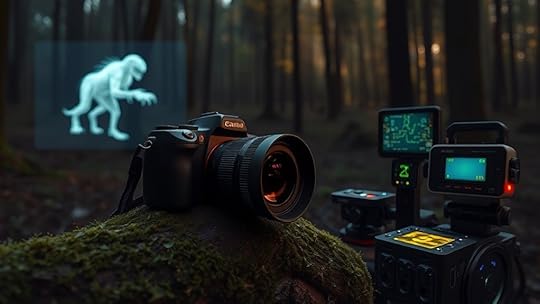
Detecting deepfake content requires a combination of advanced tools and precise methods that can identify subtle inconsistencies often missed by the naked eye. You leverage neural networks trained to analyze pixel-level anomalies, artifacts, and unnatural movements. These tools excel at spotting signs of facial reenactment, where manipulated faces may show unnatural blinking, mismatched lip movements, or inconsistent lighting. Techniques such as deep learning classifiers evaluate video metadata, compression artifacts, and facial expressions to flag potential fakes.
TechniqueFocusNeural Network AnalysisDetects pixel inconsistencies and artifactsFacial Reenactment DetectionIdentifies unnatural facial movementsMetadata AnalysisChecks for anomalies in video infoCompression Artifact AnalysisSpots manipulation signs in video compressionThe Future of Cryptid Evidence in the Age of AI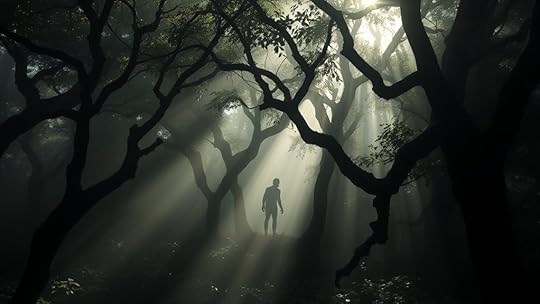
Advancements in AI technology are transforming how cryptid evidence is evaluated, making it both easier and more challenging to verify authenticity. As deepfake capabilities improve, youâll face increased difficulty distinguishing genuine footage from AI-generated fakes. This evolution raises significant ethical implications, such as spreading misinformation or undermining trust in genuine evidence. It also introduces legal challenges, including the need for updated laws to address digital forgery. To navigate this future, consider:
Developing advanced detection toolsPromoting transparent evidence sharingEstablishing legal standards for digital authenticityEducating the public on AI manipulation risksUltimately, the future of cryptid evidence depends on balancing technological progress with responsible verification, ensuring that truth remains accessible despite evolving AI threats.
Strategies for Researchers and Enthusiasts to Counteract Deepfake Misinformation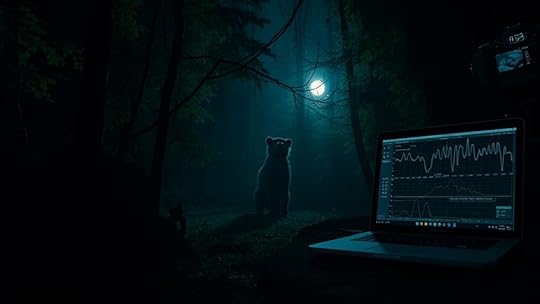
As deepfake technology becomes more sophisticated, researchers and enthusiasts must adopt proactive strategies to combat misinformation. First, focus on developing and using advanced detection tools that identify subtle inconsistencies or artifacts in videos. Stay informed about ethical concerns to guarantee your methods respect privacy and avoid harm. It’s also vital to understand the legal implications surrounding deepfake creation and distribution, ensuring you operate within the law. Promote media literacy by educating others on how to recognize genuine content versus manipulated videos. Collaborate with tech companies and legal experts to establish standards and protocols for verifying content authenticity. By combining technological vigilance with ethical awareness and legal understanding, you can more effectively counteract deepfake misinformation and protect the integrity of cryptid video analysis.
Frequently Asked QuestionsHow Can AI Differentiate Between Genuine Cryptid Footage and Deepfakes?You can use AI detection techniques to differentiate genuine cryptid footage from deepfakes by analyzing subtle inconsistencies like lighting, shadows, and pixel patterns. Authenticity verification involves comparing videos against known cryptid appearances and behaviors. AI tools scan for anomalies that humans might miss, helping you identify whether footage is real or artificially manipulated. This process enhances your ability to trust or question the credibility of cryptid videos in an increasingly digital world.
What Ethical Concerns Arise From Creating and Sharing Deepfake Cryptid Videos?Imagine a world where truth blurs into fictionâcreating and sharing deepfake cryptid videos raises serious ethical issues. You face consent dilemmas, as individuals’ images might be used without permission, and authenticity concerns, since viewers can be misled. When false footage spreads, it damages trust, fuels misinformation, and blurs the line between reality and fiction. You must consider your responsibility in ensuring honesty and respecting privacy in this digital age.
Are There Legal Implications for Producing or Distributing Deepfake Cryptid Content?You might face legal implications if you produce or distribute deepfake cryptid content. Legal liability could arise if your videos infringe on intellectual property rights or defame individuals or organizations. Laws vary by jurisdiction, but unauthorized use of copyrighted material or creating deceptive content can lead to lawsuits. Always consider the legal risks involved, and guarantee you respect intellectual property rights and avoid spreading false or misleading cryptid videos.
How Do Deepfakes Influence the Scientific Validity of Cryptid Research?Deepfakes impact the scientific validity of cryptid research by blurring the line between genuine evidence and fabricated content. Historically, cryptid sightings relied on eyewitness accounts and blurry photos, but now deepfakes can create convincing false videos, influenced by cultural trends and technological advances. You might find it harder to trust new evidence, as deepfakes challenge the authenticity of reports, making it essential to verify sources carefully to maintain scientific integrity.
Can Community Verification Methods Effectively Combat Deepfake Misinformation?Can community verification truly combat deepfake misinformation? You might think skepticism alone can weed out false claims, but community skepticism often faces verification challenges with convincing deepfakes. While collective efforts can spot inconsistencies, sophisticated AI makes it harder to trust unverified videos. So, are community methods enough, or do we need advanced tools to stay ahead? Relying solely on community verification might not suffice against increasingly realistic deepfake videos.
ConclusionAs AI weaves its intricate tapestry into cryptid tales, you stand at the crossroads of truth and illusion, like a lighthouse amid a fog of deception. Deepfakes threaten to blur the lines between real and unreal, but with your keen eye and trusted tools, you can pierce through the digital fog. Embrace vigilance as your guiding star, ensuring that the mysterious creatures of legend remain rooted in reality, not lost in the shadows of falsehood.



